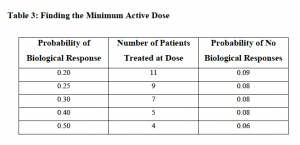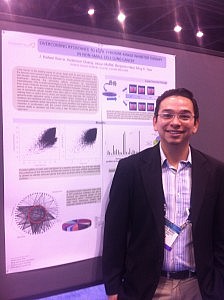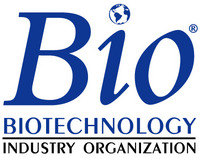Red and Green Flags in cancer research and development
Recently, there was a red flags meme going around the biosphere started by Xconomy’s Luke Timmerman on 21 Red Flags in Biotechs to Ignore at your Peril. This inspired excellent contributions from David Sable on the buy side with his red and green flags, as well as Katrine Bosley from the Biotech CEO’s perspective and Andrew Goodwin on the research and investor side. They are all excellent reads so if you missed this wonderful collection, please do check them all out. If anyone wants to add new ones, please highlight them in the Comments below.
My perspective is a little different, coming from multiple angles of science and academia, industry, consulting, and as blogger on cancer research and development both here and on our sister site, Biotech Strategy Blog.
A few people asked me what my thoughts on biotechs were and what my 5 red flags might be, but back then we were in the middle of the launch of our new conference coverage service and planning for the last round of medical meetings on the oncology circuit.
My side comes from an oncology/hematology/immunology background and may not be broadly applicable outside those specialist fields. Without further ado, here are things I tend to consider when evaluating companies in this space, whether that be as an analyst, consultant, investor, blogger or whatever hat is on that day:
1. Is the target oncogenic?
This sounds obvious, after all, how can you hit a target you don’t have or know about? As Dr Len Saltz lucidly explained it well here – companies who ignore the basics are doomed to failure. In the world of targeted therapies, this is probably key. If it doesn’t matter to the survival of the tumour, then the chances are efficacy will be poor and all you add are unwanted side effects.
There are numerous examples from the difference in targeting BRAF vs. BRAFV600E in metastatic melanoma to pan PI3K vs. PI3K delta in CLL and NHL, and many many others.
Basically, a mutated target is more likely to matter than mere overexpression or amplification of target, nebulous targets are much harder to pin down and increase the chances of failure.
Another related red flag is completely misunderstanding the disease being studied. You can tell when companies make this mistake easily, because they tend to lump multiple different subtypes into one trial. Not only do various tumour types behave differently, but various subsets can also behave in different ways – some are chemosensitive, others not, some respond to targeted agents, some don’t. An excellent example is soft tissue sarcomas (STS), where each subset can be treated as individual diseases; doing a catch-all trial here is a huge red flag as it is usually doomed to failure. A much smarter approach is isolate key oncogenic targets and select patients or subsets most likely to respond to the targeted therapy being investigated.
Solution: Validate the specific target early, before you run large phase III trials.
2. Is the science solid?
We’ve all sat through small cap biotech presentations that bamboozles with fancy science and dare I say it – fervour. Except that the subsets the agent appears to work in appear to be odd, at best. Lack of a validated biomarker or target is another red flag, as are catch-all studies. After all, why would you want to treat a so-called targeted drug in an untargeted fashion? Often, these approaches portend negative overall trial responses and retrospective frantic data mining for a subset that explains the few responders.
Related to the ‘right target’ is something called therapeutic index – that is, are we shutting down other relevant pathways to reduce resistance? All too often, a small company has only one drug and no broad pipeline to add and combine modalities to achieve this. That makes it harder to compete unless they license the agent or get bought out by a bigger company with another drug to partner with it. The solid science argument might therefore apply to a logical combination rather than monotherapy – the company that refuses to see this is likely to experience a few challenges along the way.
Another red flag is the use of old fashioned preclinical models that have no relevance to modern research. It happens more often than many realise. Even worse is the paucity of relevant preclinical research and then having to do the work after a spectacular phase 3 trial failure, when thoroughness of the research before the trials would have saved a lot of pain, angst and even embarrassment.
Solution: Best to do the biomarker and validation work in preclinical and phase I/II, then run prospective trials based on more stringent patient selection criteria to improve your chances of success. You are often better off running multiple phase II trials to keep refining and honing the approach and combinations with greater degrees of certainty than rush into expensive randomized studies and failing badly. Companies that do these two things well offer clear green flags to biotech watchers.
3. Does the phase I and II investigator pool include relevant researchers e.g. translational scientists or immunologists?
Many will be surprised how many ‘targeted’ agents involve clinical trials with clinicians who are not scientists, or worse, come from the chemotherapy world. Dovetail this with the catch-all approach from #2 and you have a recipe for disaster before you begin. Even big pharma can fall into this trap.
These seemingly random approaches tend to met with vague quotes from thought leaders, “It’s well worth trying” or “I think it’s a good idea” without any precise rationale for why the concept will work. These doctors are easy to spot in press briefings – they look like a deer in the headlights when pressed with detailed scientific questions and run a mile from being interviewed afterwards, unless it’s for the kind of benign potted quotes mentioned above. Not a good sign.
4) Is it a good company?
There are some biotech and pharma companies who unfortunately have a string of failures behind them. The uninitiated often dismiss this, citing the Thomas Edison example of many tries before finally achieving success. You could also argue that maybe, just perhaps, they keep making the same fundamental mistakes outlined above and haven’t learned to adapt.
Other flags here are openness and transparency, or rather the lack of it. This includes selective disclosure and hyping of efficacy claims while understating the adverse event profile. Research and being on top of the data will stand many in good stead here, whether from a licensing, competitive analysis or investment standpoint.
Just as David Sable mentioned one of his red flags was being disrespected, for example by the company person who sits in his seat at the head of the table, there are similar parallels on the other side:
Good companies tend to be open, accessible and transparent, in my experience. They routinely offer or provide access to their scientists, researchers and thought leaders doing the work when asked. They don’t exclude you from briefings: “No, because you’re merely a science blogger.” Ouch yes, been there done that!
5) Does the company/drug offer value?
There is no doubt that being first to market offers a competitive advantage and later drugs may need to provide superior efficacy or tolerability, but if you are looking at 5/6/7th to market, you have to question what is the real value add going to be?
Companies who just happen to have a me-too and no clue how or where their drug will add value over the ones before them are notable red flags. Incremental improvement in outcomes is one thing, same old, same old is quite another. Future revenue success is driven by having a clear path to market and a good value proposition that is compelling. Without these, any clinical R&D is largely wasted time and effort, not to mention a significant expense. Being aware of changes in the competitive landscape as well as flexible in adjusting to them is also critical. Look at how many companies have been caught surprised and flat footed by the rise of immuno-oncology, for example.
On the other side are those companies who are smart and innovative; they position the product creatively, whether it be in the form of a combination with another agent that overcomes resistance or delays the resistance thus improving survival for patients add clear value. Another way to create more value is that the drug can work in a slightly different way from what went before e.g. it hits a more relevant oncogenic target creating a well defined patient segment and path to market (see #1) or has fewer off-target effects, thereby improving tolerability.
It’s not all bad news and red flags in oncology R&D
Green flags include innovative, successful companies with a demonstrable track record of launches and drugs that make a difference to patients lives. There’s no mystery why Roche/Genentech and Novartis consistently stand out from the pack in oncology/hematology – they have a relentless mentality to innovation and value creation as well designed, scientific based trials. BMS have done very well transforming their oncology franchise from chemotherapies that hit the patent cliff to being a leader in immune-oncology with their acquisition of Medarex and partnerships with biotech companies such as Innate Pharma for licensing deals.
It’s up to the rest of the pack to innovate better and faster if they want to catch them up.
Resources:
Luke Timmerman’s 21 Red flags for biotechs
David Sable’s Red Flags and Green Flags
Katrine Bosley’s Red and Green Flags
Andrew Goodwin’s Red and Green Flags



 This morning I was pondering a triangulation of several random thoughts that appeared in my Twitter stream, many from BIO, about various topics:
This morning I was pondering a triangulation of several random thoughts that appeared in my Twitter stream, many from BIO, about various topics: